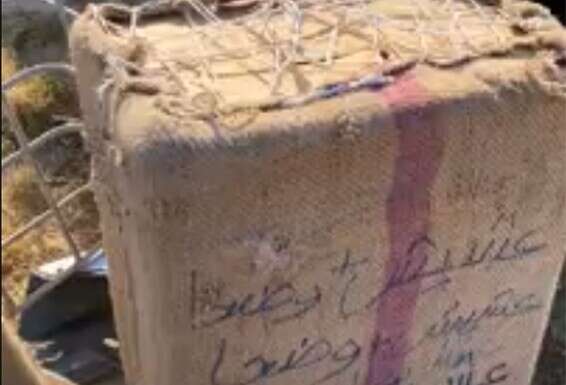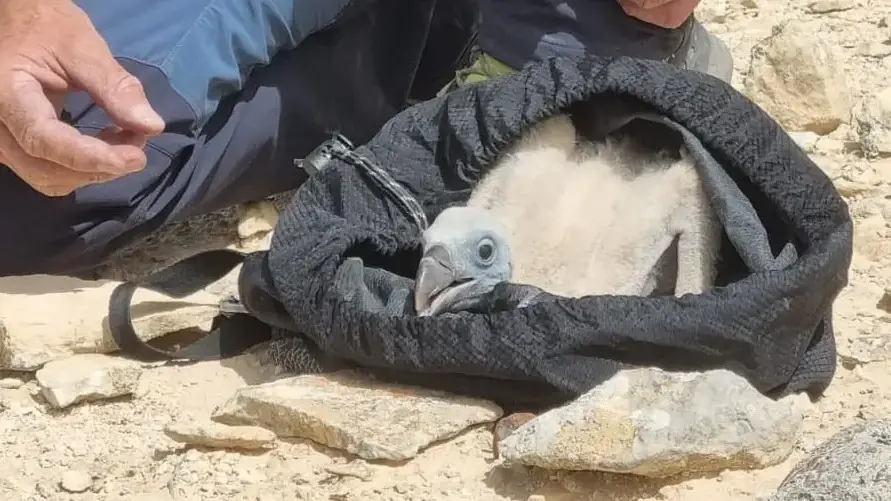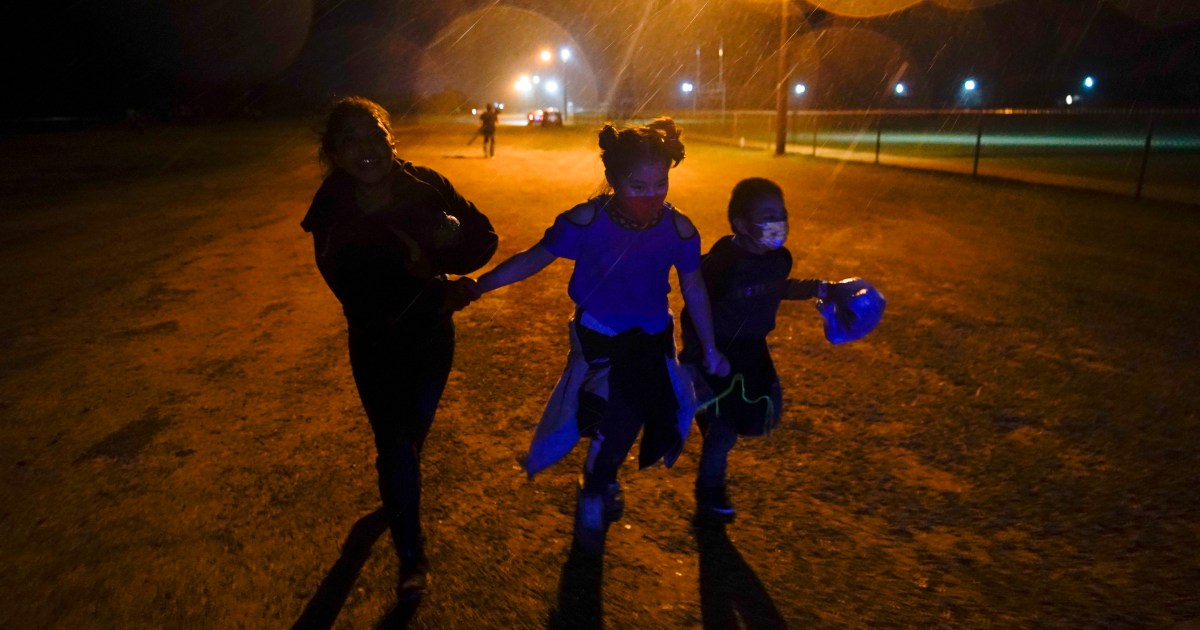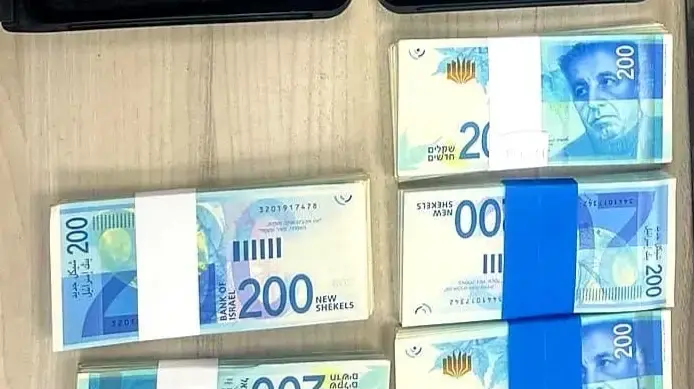The state of Israel's handiwork with drug smugglers on the border with Egypt has turned the phenomenon into a state blow, and in the spirit of social networks - also documented from every direction • Smugglers upload non-stop video ticketing including photos of moving goods and traveling wildly • Who will stop the celebration?
Late morning. Place: The border fence with Egypt, in the pioneer region. From the Israeli side, two new ATVs emerge from the dunes and quickly approach the fence, signaling people waiting on the other side that it's time. On the Egyptian side, a group of about five Bedouins, who settled in the area ahead of time, immediately leapt into action.
Within a few seconds a ladder is placed on the fence, some people climb it and stop at different heights, and a human chain begins to work. Huge packs are thrown across the fence, square carriers wrapped in jute cloth to which straps are attached, move up the ladder and are thrown to the other side. Each package has about 25 kg of hash worth hundreds of thousands of shekels. In less than a minute the whole event ends. The packages are loaded onto the ATV and everyone gets off the ground.
A glimpse into the smuggling industry
Smugglers' latest innovation is uploading videos to social networks, where they ridicule IDF soldiers. The descriptions presented here are based on some of those videos posted on networks and especially in ticketing. Since the incident in pursuit of IDF soldiers, which flooded the public with the depth of the Negev crisis - posted thanks to a video in Tiktok - I follow the networks, check the different commenters and profiles. Dozens of videos document the smuggling industry, the drug distribution chain, smugglers' lives and the huge amounts of money they roll as a routine.
Photos from videos uploaded by drug smugglers to social networks
The sweeping message that hovers above everything is blatant and brazen contempt for law enforcement. Not only is the fact that all this delinquent activity is being done openly on social networks, but also the specific events described below, which occur near police and real-time photographs, suggest the arrogance of the offenders. They know no one will catch them, and even if they do - they will come out very cheap.
The materials in the many videos make it possible to take a unique and fascinating journey into the interior of the smuggling industry on the Sinai border, to see inside, the people, the equipment and the territory, and to look behind the scenes of one of Israel's most difficult law enforcement problems. Due to the fact that the videos appear without exact details, it is difficult to estimate how many deal with separate events and how many describe different angles or parts of the same event.
The videos clearly show, among other things, an ATV with a rear "cage" designed to help carry it. In these cages are placed about three-quarters of the brown jute packages with the inscription in Arabic "Amish". Some of the videos are filmed in the dark, and some are in daylight. These packages accompany us throughout many of the first stages of smuggling.
Photos from videos uploaded by drug smugglers to social networks
At one point the bags are centered on larger vehicles, usually a Toyota Landcruiser Jeep. One of the frames shows such a vehicle from the driver's perspective. The camera slowly scans the interior of the vehicle, moving from the watch panel to the driver's seat, where one package (exceptionally turquoise) is placed, after which the camera continues to show the rear - where about five more bags fill the vehicles to zero. Another video shows a still picture showing a pile of about ten such sacks lying on a dirt path near a landcruiser with its doors wide open.
At this stage the vehicles are already moving in Israeli territory. In some of the videos they drive on the Negev roads (in what appears to be Highway 40), in one the driver appears to be traveling 140 miles per hour, bypassing a police car and showing his followers that a gun is on the seat, while passenger compartments and luggage are loaded with Utah bags, the smuggling fruit. A smaller vehicle - Toyota Corolla may be - is photographed at daylight at the intersection of Bir Dodge Village, with the car door open and the back seat with a brown Utah package.
Photos from videos uploaded by drug smugglers to social networks
Things do not always go smoothly. In one of the videos, smuggling is documented. At first, everything seemed to go as planned, but after about 15 seconds, screams started and everyone dispersed. On the Israeli side, the unloaded packages are collected and the smugglers leave. The shaking camera is aimed down as the Egyptian side begins to experience, and among the fugitives also the photographer. The escapees run a few meters to what appears to be a moderate rocky slope and bend over there, hidden from the soldiers' eyes.
Once the packages are shipped inland, they open and remove dark hash soles, about 200 grams each. One video shows a table packed with various types of equipment on which 15 soles are placed, and in another video the soles are cut into "fingers" - units of 5-7 grams sold as a product in the drug market. The cutting is done accurately and measured using a ruler.
Bling Bling, Negev Version
The smuggling has long since become a state blow. Since the fence was built in 2012 their character has changed, and the emphasis has shifted from infiltrator convoys, trafficking in women and other goods to an easy, convenient product for handling and throwing across the fence and of great value: the cannabis. While there are no real data on the extent of the smuggling, the police and IDF counterterrorism data on the fence can indicate the extent of the phenomenon. This year, so far, 34 smuggling attempts have been thwarted along the border and ten indictments have been filed against 20 suspects, one can only imagine the high numbers of unsuspected smuggling.
Photos from videos uploaded by drug smugglers to social networks
One of the recurring motifs in the footage is, of course, the money. A lot of bills appear in videos in various shapes and situations, and in huge quantities. If you estimate by the thickness of the packages, some of the videos show amounts that reach several million shekels.
It is difficult to describe in words the scope of materials and videos that deal with financial bragging, and will suffice for a few examples. One video shows a small refrigerator, mini-bar, and its contents are neat stacks of 200 shekels, probably worth millions of shekels. The caption accompanying the video says: "In our fridge there is no food." Another video, filmed inside the living room of one of the smugglers, shows a sofa with banknotes of NIS 200 and NIS 100 scattered. The camera moves slowly and scans the entire cobblestone coffee table for $ 100.
This video is important for other reasons: It has a rare glimpse of the smuggler's home. What looks exterior is furnished with high-quality interiors, with a huge plasma screen, upscale flooring, molded plaster walls and invested lighting.
Another video shows 50 packages of bills, for a total of hundreds of thousands of shekels; Another tired table with notes in the middle of a counting machine, with the photographer engaged in counting money and arranging packages. One of them was glued to the steering wheel of a Skoda-type vehicle with NIS 200 fan-shaped notes. Money banknotes are also tucked into other parts of the vehicle - on the vents, on the clock board and on various slots. The vehicle travels in what appears to be one of the regulated Bedouin towns. Another video shows a pile of high-rise bills lying on the seat next to the driver with his back slightly tilted, supposedly "hiding" from passersby peeking out the window.
Photos from videos uploaded by drug smugglers to social networks
Smugglers' good lives are evident from all sides. They travel in luxury vehicles - in many cases BMW - buy in the best shopping malls and stores in Be'er Sheva, fly abroad, holiday travelers (Eilat is a popular destination) and of course many cafes, restaurants and other treats. - The risers and other 4X4 vehicles seen in the video are not scrapy but new and well maintained.
Quick and easy money
The traffic offenses occupy a whole and particularly beloved genre of the videos. The smugglers enjoy taking pictures of themselves traveling at extremely high speeds - in some cases 240 mph and even more. In some of the videos, people are carrying IDF Tabor weapons. In one case, a squad of soldiers from the Bedouin patrol battalion is also documented. It is not known who filmed the video - whether he himself was a soldier in the battalion or whether the video rolled into it the way video clips on the net - but he eventually got into a ticking account.
In one of the videos, a Bedouin group appears to verbally confront IDF soldiers in what appears to be Tze'el's fire areas. In this case, the impression is not that it was a smuggling caught on hot, but rather a chance encounter on the ground between the two groups. A group of about 10 Bedouins in one of the command center training facilities at Beit Guvrin (AP Lachish), climbing various facilities, rioting and fun.
The constant friction with the police and the military is a significant motif in the videos, with the basic approach being contempt and arrogance. In one case, a driver's bag of cannabis seeds is filmed on the seat next to the driver. The camera rises slightly, and in the driver's hand a stack of bills worth thousands of shekels. The camera continues to mount and it is revealed that the vehicle is just meters away from a police van, presumably inside one of the Beer Sheva neighborhoods. The headline next to the video reads, "Who has a good job, who?"
In one of the videos, a pile of banknotes is photographed on the seat next to the driver whose backrest is slightly tilted, supposedly "hidden" from passersby, and
in another case a pile of banknotes is filmed, and as the camera slowly rises, it turns out to be in the Beersheba courthouse square, a kind of symbolic defiance.
Those who study the videos can come to a fuller understanding of the power of the problem in the South. The legendary sums of money that can be earned in a relatively simple, one-month-to-month job, along with the low risk of being caught and punished, make smuggling desirable and available. Why would a young guy who could be a millionaire in a few nights spend many years developing an "ordinary" career?
Why would the state succeed in persuading these gangs to settle in orderly plots as they enjoy the promiscuity and boundlessness of the existing situation? The money is just too big and too easy, and the state has no way to stop the drift.
The police say: "The police are working with the IDF and the other security forces against smuggling. In this effort, a variety of police forces and means are being taken, including the Southern District Border Intelligence Unit (MAGN) and the Border Police undercover unit. The security forces will continue the determined and ongoing struggle with smugglers along the borders of the State of Israel, and in a variety of operational activities to thwart smuggling and protecting the security of the citizens of the State of Israel. "









